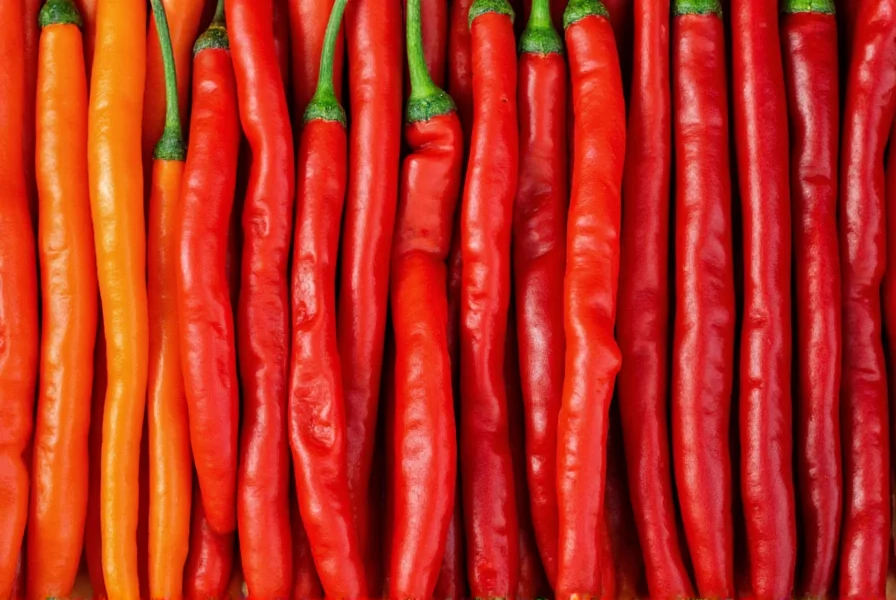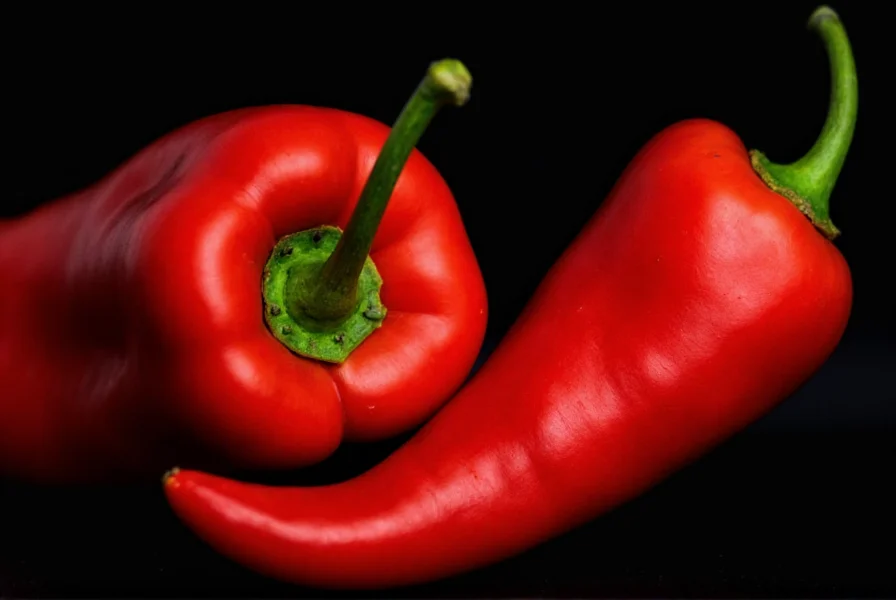When exploring the world of red hot pepper varieties, you'll discover a spectrum of flavors and heat intensities that can transform ordinary dishes into extraordinary culinary experiences. Understanding these peppers goes beyond just their spiciness—they represent centuries of agricultural tradition and cultural significance across multiple continents.
Understanding Red Hot Pepper Varieties
Red hot peppers encompass numerous cultivars that have reached full maturity, developing their characteristic red hue and maximum capsaicin concentration. Unlike their green counterparts, which are harvested earlier, red peppers have undergone complete ripening, often resulting in more complex flavor profiles with subtle sweet or fruity notes alongside their heat.
The transformation from green to red occurs as chlorophyll breaks down and carotenoids develop. This ripening process not only changes color but also intensifies flavor compounds and increases certain nutrient concentrations, particularly vitamin C and carotenoids.
Popular Types of Red Hot Peppers
While "red hot pepper" is a general term, several specific varieties dominate culinary applications. Each brings unique characteristics to the table:
| Pepper Variety | Scoville Heat Units | Flavor Profile | Common Uses |
|---|---|---|---|
| Cayenne | 30,000-50,000 | Sharp, slightly smoky | Hot sauces, spice blends, stir-fries |
| Bird's Eye Chili | 50,000-100,000 | Intense heat with citrus notes | Thai and Vietnamese cuisine, sambal |
| Habanero | 100,000-350,000 | Fruity, floral with intense heat | Salsas, hot sauces, Caribbean dishes |
| Thai Dragon | 50,000-100,000 | Clean heat with slight sweetness | Asian cuisine, pickling, drying |
| Serrano | 10,000-23,000 | Grassy, bright heat | Pico de gallo, sauces, roasting |
Measuring Heat: The Scoville Scale Explained
The Scoville scale remains the standard measurement for red hot pepper heat levels, quantifying capsaicin concentration in Scoville Heat Units (SHU). Developed by pharmacist Wilbur Scoville in 1912, this scale originally relied on human testers diluting pepper extract until heat became undetectable.
Modern laboratories now use high-performance liquid chromatography for precise measurements, but the Scoville scale remains the common reference. Understanding these measurements helps home cooks and professional chefs select appropriate peppers for their culinary creations without overwhelming heat.
When working with extremely hot varieties like red habaneros or ghost peppers, proper handling techniques become essential. Always wear gloves when preparing these peppers, avoid touching your face, and wash hands thoroughly afterward. The capsaicin oil can remain on surfaces and cause irritation hours after handling.
Culinary Applications of Red Hot Peppers
Mastering cooking with red hot peppers requires understanding how heat and flavor compounds behave during preparation. Capsaicin is oil-soluble and relatively stable to heat, meaning cooking doesn't significantly reduce spiciness, though it can mellow some harsh notes.
For balanced heat distribution in sauces and stews, finely mince peppers and add them early in the cooking process. If you prefer more pronounced pepper flavor with less heat, remove seeds and membranes (where most capsaicin concentrates) before adding to dishes. Roasting red peppers enhances their natural sweetness while maintaining heat levels.
Preservation methods significantly impact flavor development. Drying concentrates both heat and flavor, while pickling introduces acidity that can balance intense spiciness. Fermentation creates complex flavor compounds while slightly reducing perceived heat.

Growing Red Hot Peppers at Home
Cultivating red hot peppers in home gardens offers access to fresh, vibrant peppers while providing gardening satisfaction. These plants thrive in warm conditions with at least 6-8 hours of direct sunlight daily. Starting seeds indoors 8-10 weeks before the last frost date gives plants sufficient time to mature.
Soil should be well-draining with a pH between 6.0-6.8. Consistent watering is crucial—allowing soil to dry completely between waterings prevents root rot while maintaining moisture supports fruit development. Most varieties require 70-90 days from transplanting to reach full red maturity.
Harvesting at the red stage maximizes both flavor complexity and nutritional content. Peppers left to fully ripen on the plant develop higher capsaicin levels and richer flavor profiles compared to those harvested green. For continuous production, pick peppers regularly as the plant will produce more fruit.
Health Benefits Supported by Research
Scientific studies reveal compelling health benefits of red hot peppers beyond their culinary appeal. Capsaicin, the compound responsible for heat, has demonstrated anti-inflammatory properties and may support metabolic health. Research published in the journal Chemical Senses indicates capsaicin can increase thermogenesis, potentially aiding weight management efforts.
Red peppers are exceptional sources of vitamin C—often containing more than citrus fruits—and rich in carotenoids like beta-carotene and lycopene, which function as antioxidants. These compounds support immune function and may protect against cellular damage.
Emerging research suggests capsaicin may have analgesic properties when applied topically, with some studies showing effectiveness for certain types of nerve pain. However, individuals with gastrointestinal sensitivities should consume hot peppers in moderation.
Safety Considerations and Handling Tips
Working with extremely hot red hot pepper varieties requires proper safety precautions. Always wear nitrile gloves when handling high-heat peppers, as latex provides insufficient protection against capsaicin oil. Avoid touching your face, especially eyes, during preparation.
If accidental contact occurs, use milk or yogurt to neutralize the burning sensation—capsaicin is fat-soluble, so dairy products provide relief more effectively than water. Vinegar can also help break down capsaicin compounds on surfaces.
When cooking with extremely hot peppers, start with small quantities and taste incrementally. Remember that heat intensifies as dishes sit, so allow time for flavors to meld before adding additional peppers. Never inhale fumes from cooking extremely hot peppers, as this can cause respiratory irritation.
What's the difference between red and green hot peppers?
Red hot peppers are fully mature versions of what were previously green peppers. The ripening process increases sugar content, develops more complex flavors, and typically intensifies heat levels. Red peppers also contain higher concentrations of certain nutrients like vitamin C and carotenoids compared to their green counterparts.
Which red hot pepper is best for beginners?
For those new to cooking with spicy peppers, cayenne or serrano peppers provide manageable heat levels (30,000-50,000 SHU for cayenne, 10,000-23,000 SHU for serrano) with versatile flavor profiles. These peppers offer noticeable heat without overwhelming intensity, making them ideal for developing tolerance and understanding how to balance spice in dishes.
How can I reduce the heat of a dish that's too spicy?
To reduce excessive heat in a dish, add dairy products like yogurt or sour cream, which contain casein that binds to capsaicin. Acidic components like lime juice or vinegar can also help balance heat perception. Adding starches like rice or potatoes absorbs some capsaicin, while sweet elements like honey or sugar counterbalance spiciness through flavor contrast.
Can you freeze red hot peppers for long-term storage?
Yes, freezing is an excellent method for preserving red hot peppers. Wash and dry peppers thoroughly, then freeze whole or sliced on a baking sheet before transferring to airtight containers. Frozen peppers maintain quality for 6-12 months and can be used directly in cooking without thawing, though they'll lose crispness. For best flavor retention, use within 6 months.
Why do some red hot peppers taste fruity?
The fruity flavor in certain red hot peppers like habaneros comes from terpene compounds that develop during ripening. As peppers mature from green to red, sugar content increases while chlorophyll breaks down, allowing these aromatic compounds to become more pronounced. Environmental factors including soil composition and climate also influence the development of these complex flavor profiles.











 浙公网安备
33010002000092号
浙公网安备
33010002000092号 浙B2-20120091-4
浙B2-20120091-4